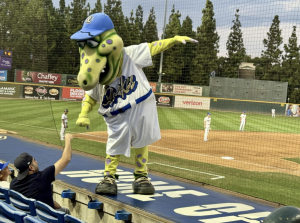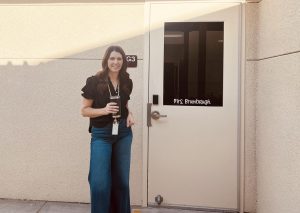Behind the Scenes of the Hybrid Learning Plan

San Mateo-Foster City School District
School will definitely be a lot different compared to before.
September 23, 2020
Day after day, students log on to a computer and look at a screen in order to learn. Nothing is face to face; everything is digital. Multiple months have passed since Day Creek Intermediate School has closed, and there is still no green light indicating a return to campus.
Distance Learning has taken its toll on everyone involved. Many teachers and parents have noticed differences in their children’s behavior. Some show typical growth, while others struggle. “Since a teacher isn’t with them, there is more of a temptation for them to be distracted by things like pets, cellphones, and the desire to rest and relax at home,” said Mrs. Chu, fourth grade teacher at John L. Golden Elementary.
While much of the focus is on students, it’s been significantly tough for teachers too.
“Distance learning has been very challenging as a teacher. Some may struggle with the technology piece, and some may have trouble with the socialization piece,” Mrs. Chu said.
Every day students, teachers and parents await the “okay” to go back to their school campus. But it all depends on the county, and the county depends on the data. A greenlight for the hybrid learning schedule is something many look forward to, but they might not understand the hybrid procedure. Hybrid is a mixture of a virtual learning, and physically being at school.
“There was a process that went on right after the [closure] of school of how we were going to reopen in the fall. There were a lot of surveys, a lot of parents, they polled their input [on] surveys. Multiple surveys that went out that had what parents would be willing to do – what they would like to do,” said Mr. Garcia, board president of the Etiwanda School District.
For Day Creek to return to campus many things need to happen. In the state of California, every county has a different color tier. This color represents where each county stands with COVID-19. According to EdSource, “Purple, or Tier 1, indicates that the virus is widespread in the county — with more than seven cases per 100,000 residents or more than 8% of tests results reported positive over seven days. Red (Tier 2) indicates ‘substantial’ spread of the virus, while orange (Tier 3) indicates ‘moderate’ spread and yellow (Tier 4) indicates ‘minimal’ spread of the virus in the county.”
Since San Bernardino County is currently hovering in the purple tier, no one is sure when students will roam the hallways once again. But everyone is taking their guesses.
“Based on the data it could be as early as October. Based on the history it could be December. You know with the flu season coming and how that’s going to affect it, it could be March. It’s like heads or tails. You can say heads but you have no control over it,” said Mr. Apodaca, principal of DCIS.
Once the school is approved for the hybrid schedule, the seating will be unique to allow a safer distance between students. With six feet of space between each desk, half the number of students will fit into the typical classroom, and two different sessions (morning and afternoon) will be required to accommodate everybody.
“There’s only going to be 17 spaces available and everyone’s going to be six feet apart, so that’s the AM session, but the PM session will be a little bit smaller,” said Mr. Apodaca.
Even when Day Creek enters hybrid, there is no way to predict if students can avoid a return to distance learning. One positive case will send everybody back to virtual school for two weeks. Mr. Garcia did agree that there was a possibility.
“With the cases, you have the death rate. So there is a possibility that we do return to distance learning but there [would have to be] an outbreak that’s so severe so it wouldn’t just be our school, it’d be our whole school district. It’d be all of the Rancho Cucamonga, Fontana, or perhaps all the Inland Empire that’s experiencing this. That would be the state again imposing that we would be closed, so we’d take that direction.”
COVID continues to require all involved to adjust to its demands, regardless of how quickly we hope to return to 2019.
“It’s not just gonna be like we flip a switch and we’re all back to normal. I don’t believe that’s gonna happen. It’s gonna be a transition and hopefully, it happens sooner than later,” Mr. Garcia said.






